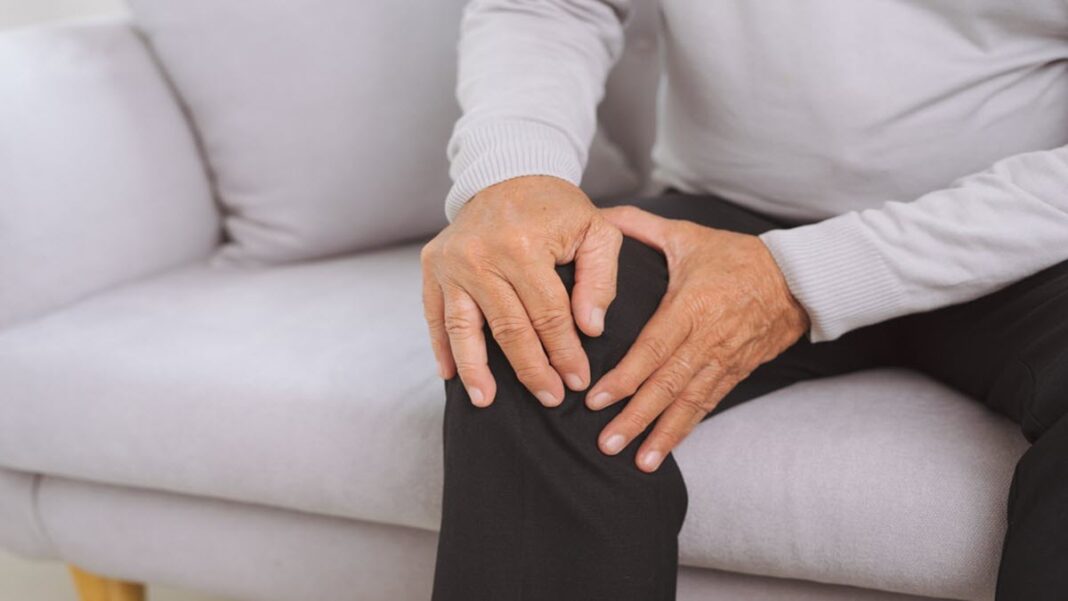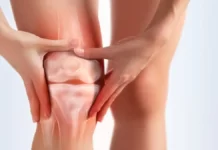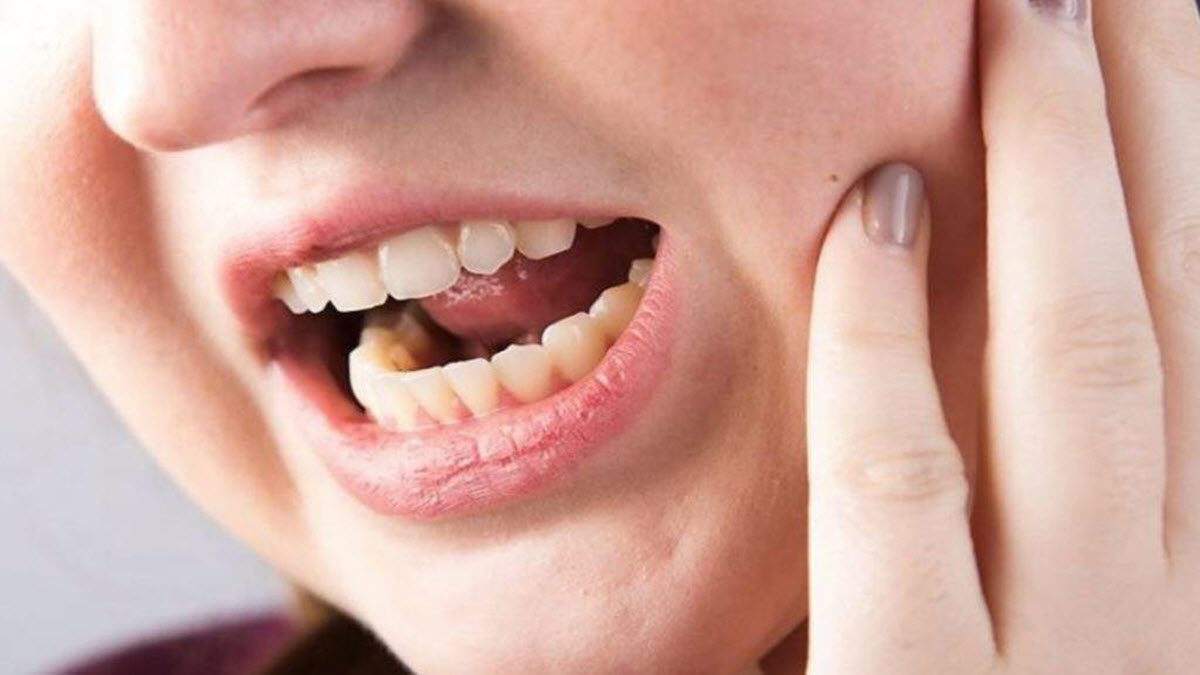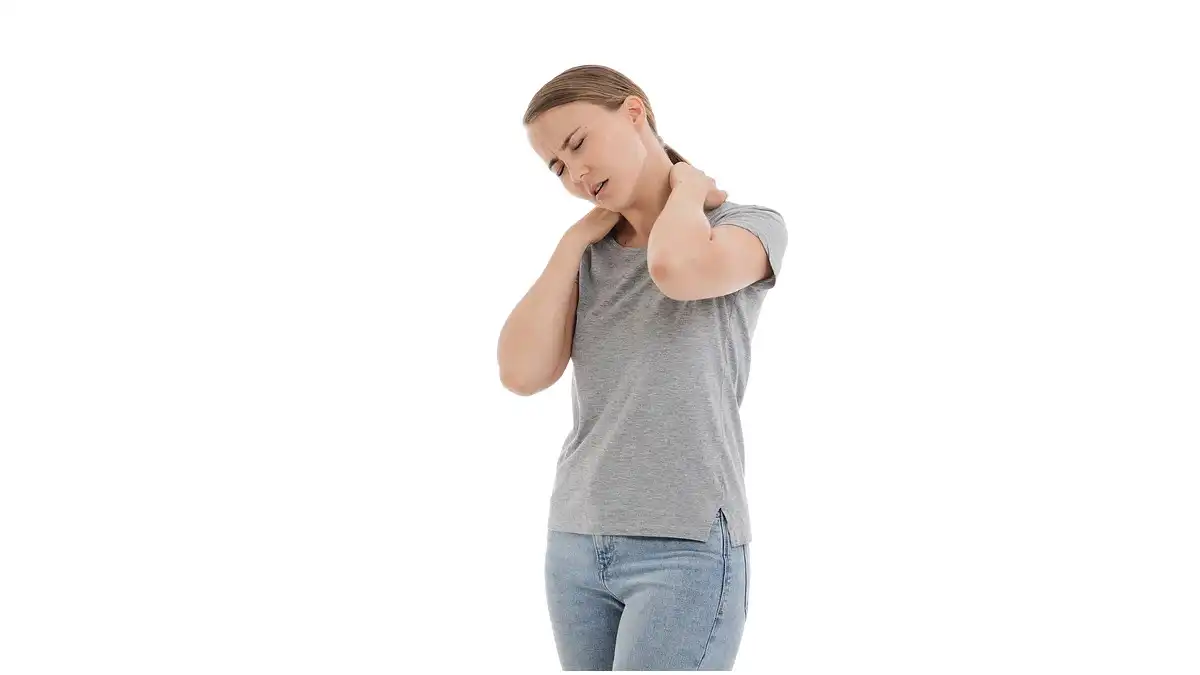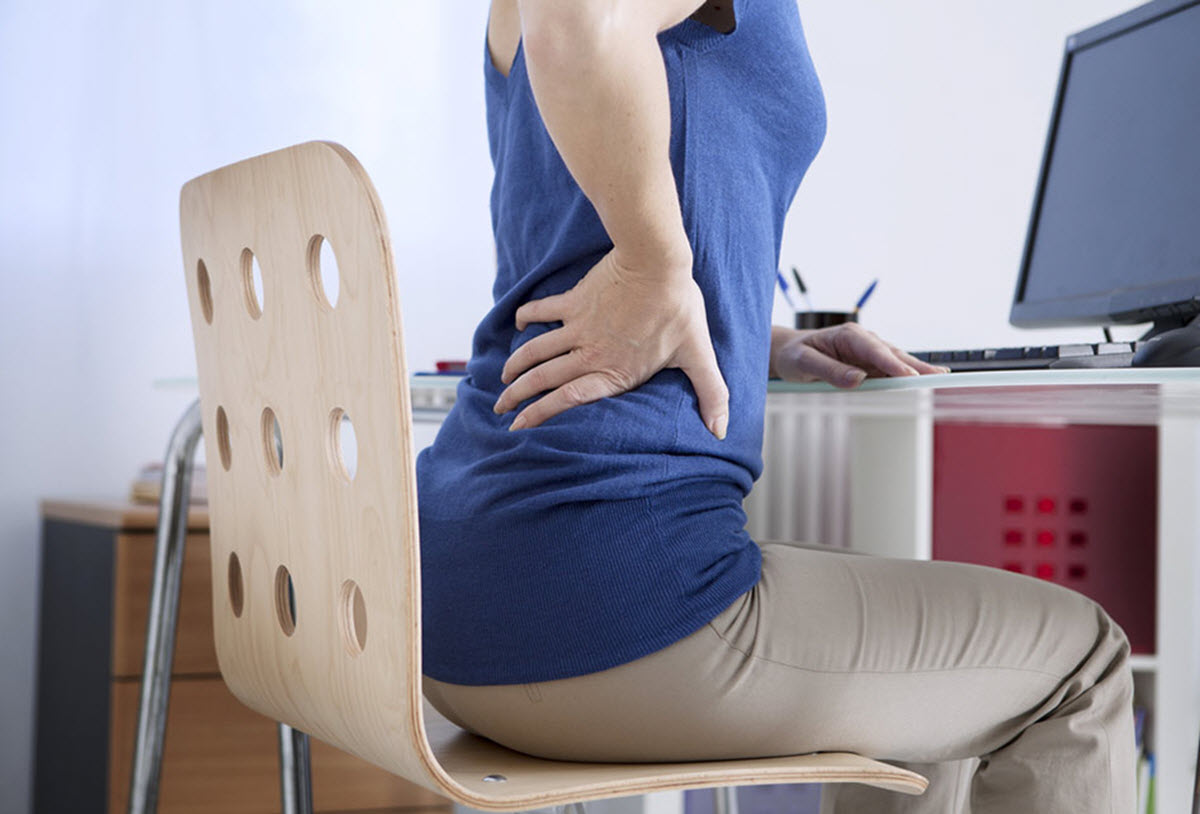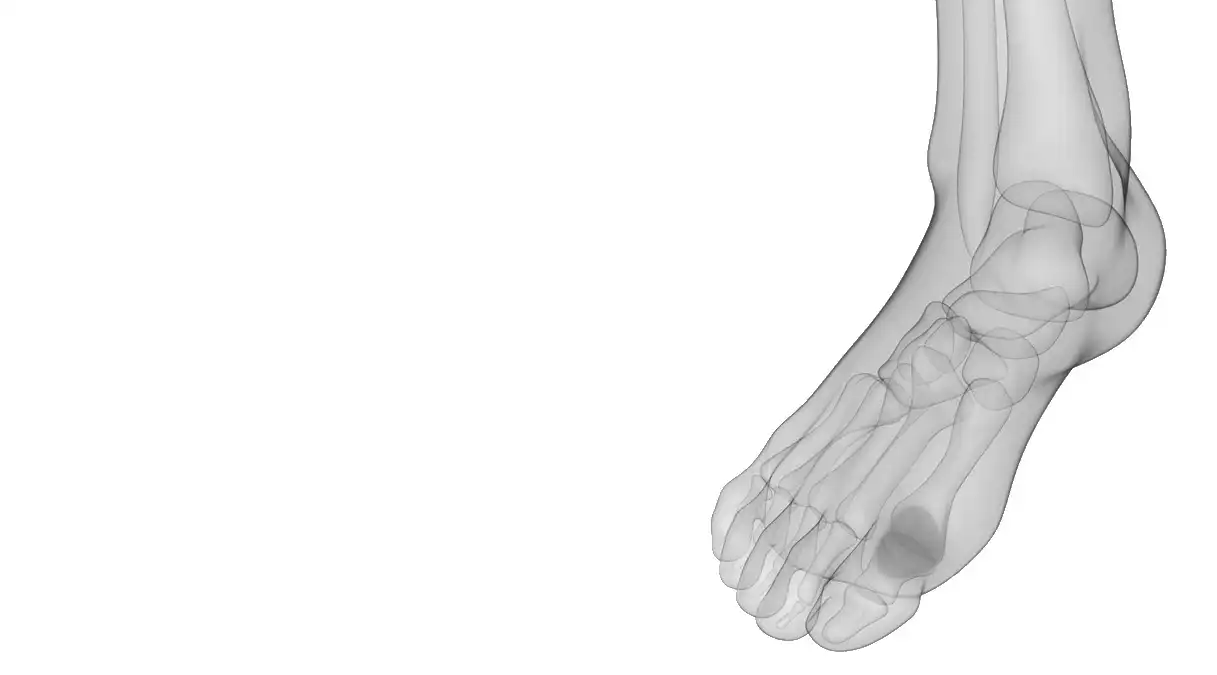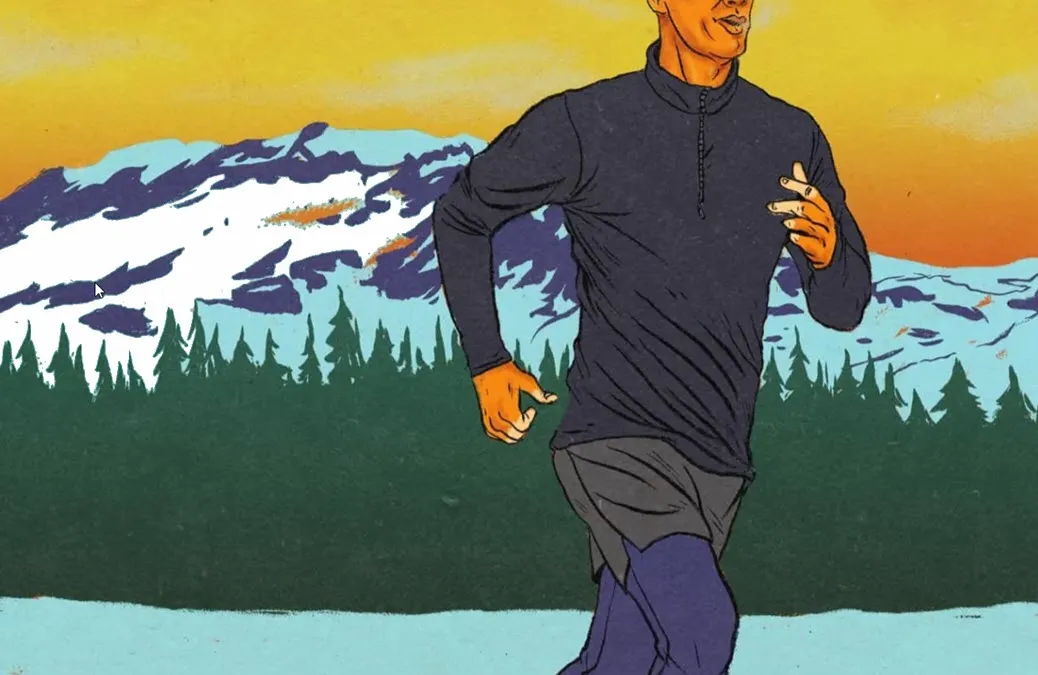Introduction
Knee osteoarthritis, also known as knee osteoarthritis, is a degenerative condition of the knee joints, characterized by the progressive deterioration of the cartilage that covers the joint surfaces. This form of osteoarthritis primarily affects the knee, one of the most heavily used joints in the body, and can lead to chronic pain, stiffness and impaired joint function.
The pathophysiology of knee osteoarthritis is based on several contributing factors. Articular cartilage, a smooth, elastic structure that covers the ends of bones at the knee joint, plays a critical role in facilitating pain-free joint movement. However, with osteoarthritis, this cartilage undergoes progressive degeneration.
The process often begins with cartilage damage caused by factors such as aging, excessive mechanical stress, previous joint trauma, or anatomical abnormalities. These initial injuries can trigger an inflammatory response, contributing to the release of inflammatory chemicals into the joint.
Over time, cartilage cells, called chondrocytes, can undergo damage, leading to a decrease in the production of new cartilage components. This reduction in cartilage synthesis combined with an increase in its degradation leads to a net loss of articular cartilage. Without the protection of cartilage, bones rub directly against each other, causing pain and inflammation.
In response to these changes, the body may form osteophytes, bony growths, in an attempt to stabilize the joint and redistribute the load. However, these osteophytes can also contribute to stiffness and limitation of joint movement.
Clinical manifestations of knee osteoarthritis include pain worsened by physical activity, reduced flexibility, and a cracking or popping sensation during movement. These symptoms can gradually worsen, impacting quality of life and the ability to perform daily activities.
Treatment for knee osteoarthritis aims to relieve pain, improve joint function, and slow the progression of the disease. Approaches include pain management with medications, lifestyle modification measures and, in some advanced cases, surgical interventions, such as cartilage grafting or joint replacement.

Osteoarthritis (OA) of the knee is the most common form of knee arthritis and can affect the following three compartments:
- Medial compartment , including the medial tibial plateau and medial femoral condyle;
- Lateral compartment , including the lateral tibial plateau and lateral femoral condyle
- Patellofemoral joint , including the patella and femoral trochlear groove.
The medial compartment of the knee is the most affected area (wear is significantly greater than in the lateral compartment), so the knee will be deviated laterally (knee varum). Isolated patellofemoral osteoarthritis may occur, particularly in patients with patellar subluxation or patella baja; however, it is most often associated with coexisting tibiofemoral osteoarthritis.


Causes of knee osteoarthritis
Osteoarthritis of the knee, a debilitating disorder that affects many people, can be attributed to a variety of causes. First of all, the natural aging of articular cartilage plays a crucial role. Over time, the cartilage that covers bone ends wears away, loses its elasticity, and becomes more vulnerable to damage. This progressive deterioration contributes to the onset of osteoarthritis in many elderly people.
In addition, joint trauma represents a significant factor in the development of knee osteoarthritis. Sports injuries, accidents or direct impacts on the knee can damage the cartilage, triggering a degenerative process. Professional and amateur athletes are often at increased risk due to the constant pressure placed on their joints.
Obesity, as the third major factor, puts excessive pressure on the knees. Overweight people are more likely to develop knee osteoarthritis due to the extra load their joints carry. This overload can lead to premature wear of the cartilage, thus contributing to the development of osteoarthritis.
Furthermore, genetic factors may also play a role in the predisposition to knee osteoarthritis. A family history of the disease can increase an individual’s likelihood of developing it. Studies have identified certain genetic variants linked to increased susceptibility to osteoarthritis, thus highlighting the genetic influence in its occurrence.
Finally, anatomical abnormalities, such as problems with leg alignment or flat feet, can contribute to the development of knee osteoarthritis. These conditions can lead to uneven load distribution on the cartilage, thereby promoting premature wear.
The causes of knee osteoarthritis can be multiple and include genetic, mechanical, environmental and lifestyle factors. Here are some of the main causes associated with knee osteoarthritis:
- Genetic Factors: Genetic predispositions may play a role in the development of osteoarthritis. Some people may inherit an increased susceptibility to cartilage wear.
- Age: The risk of osteoarthritis increases with age. Age-related changes, such as the reduced ability of cartilage to regenerate, contribute to progressive wear and tear on joints.
- Gender: Women tend to be at increased risk of knee osteoarthritis compared to men, especially after menopause. Female hormones can impact cartilage.
- Obesity: Being overweight or obese is a major risk factor for knee osteoarthritis. Excess weight puts additional pressure on weight-bearing joints, contributing to premature wear of cartilage.
- Joint Trauma: Previous injuries to the knee, such as sprains, fractures or dislocations, can damage the cartilage and increase the risk of later development of osteoarthritis.
- Intense Physical Activities: High-impact physical activities or sports that frequently place stress on the knees can contribute to premature cartilage wear, especially if done excessively.
- Anatomical Anomalies: Congenital or acquired anatomical anomalies of the knee can contribute to the development of osteoarthritis. This may include malformations of bones, ligaments or tendons.
- Inflammatory Diseases: Inflammatory diseases such as rheumatoid arthritis or gout can damage knee cartilage and increase the risk of osteoarthritis.
- Joint Instability: Chronic instability of the knee, often due to ligament damage, can lead to abnormal distribution of pressure on the cartilage, thus promoting osteoarthritis.
- Mechanical Factors: Poor alignment of the lower limbs, muscular imbalances or poor joint mechanics can contribute to cartilage deterioration.
It is important to note that knee osteoarthritis can result from a combination of several of these factors.
Symptoms of osteoarthritis of the knee
The symptoms of knee osteoarthritis are varied and can have a significant impact on the quality of life of affected individuals. First of all, pain is one of the predominant signs of this degenerative condition. People with osteoarthritis of the knee usually experience persistent pain, particularly when moving the joint. This pain may be felt as a mild discomfort at first, but tends to get worse over time, affecting daily activities.
Joint stiffness is another common symptom of knee osteoarthritis. Patients may experience a feeling of stiffness when starting movements, after a prolonged period of rest, such as sleep or a period of inactivity. This stiffness tends to ease with progressive movement of the joint, but it remains a disruptive element in daily life.
Joint swelling, due to synovial fluid buildup, is also a common symptom of knee osteoarthritis. This swelling can contribute to the feeling of stiffness and heaviness, worsening the discomfort patients experience. Sometimes the joint may even appear swollen and deformed, adding a visual dimension to the impact of the disease.
Reduced joint mobility is a direct consequence of knee osteoarthritis. Affected individuals may experience a gradual decrease in their ability to fully bend or extend the knee. This limitation in mobility can cause difficulty performing daily tasks, such as going up and down stairs or getting up from a chair.
Finally, a crackling or cracking sound during knee movements is often reported by people with osteoarthritis. These noises result from the friction of worn joint surfaces, contributing to the uncomfortable experience and impairing the fluidity of movement.
Symptoms of knee osteoarthritis can vary depending on the stage of the disease. At first, symptoms may be mild and gradually get worse. Here are some of the common symptoms of knee osteoarthritis:
- Pain: Pain is one of the most common symptoms. It may be felt as a dull aching sensation or stiffness in the knee, especially after a period of inactivity or strenuous physical activity.
- Joint Stiffness: People with knee osteoarthritis may experience joint stiffness, especially in the morning or after sitting for a prolonged period of time.
- Swelling: The knee joint may swell due to synovial fluid buildup, which can increase the feeling of stiffness and discomfort.
- Crepitations: Some patients may hear or feel crepitations or cracking sounds when they move their knee due to friction from irregular joint surfaces.
- Limited mobility: Osteoarthritis of the knee can cause a loss of range of motion and decreased flexibility in the joint, which can make certain activities difficult.
- Muscle weakness: The muscles around the knee may weaken due to pain and reduced physical activity, which may contribute to symptoms.
It is important to note that the severity of symptoms can vary from person to person. Some individuals may have knee osteoarthritis without experiencing significant pain, while others may experience significant discomfort.
Pathophysiology of knee osteoarthritis
The pathophysiology of knee osteoarthritis can be understood by examining the successive stages of the degenerative process. Although osteoarthritis can vary in severity and progression from one individual to another, here is an overview of the main stages in the development of knee osteoarthritis:
- Alteration of Articular Cartilage:
- Stage 1: Cartilage Degeneration – Initially, degenerative changes occur in the articular cartilage, the smooth, elastic substance that covers the bony surfaces inside the joint.
- Stage 2: Loss of Cartilage Matrix – Cartilage gradually loses its cushioning and lubricating properties. The cartilage matrix degrades, leading to a reduction in cartilage thickness.
- Formation of Osteophytes:
- Stage 3: Osteoarticular Reaction – In response to cartilage deterioration, the body attempts to repair the area by forming osteophytes, bony growths that can develop at the edges of joint surfaces.
- Joint Inflammation and Synovitis:
- Stage 4: Inflammation – Irritation and breakdown of cartilage can trigger an inflammatory response in the joint, leading to mild synovitis (inflammation of the synovial membrane).
- Stage 5: Abnormal Synovial Fluid Production – Synovitis can cause excessive production of synovial fluid, changing its normal composition.
- Structural Changes and Muscle Alterations:
- Step 6: Changes in Surrounding Structures – Surrounding structures, including ligaments, tendons, and muscles, may undergo adaptive changes to compensate for loss of joint functionality.
- Stage 7: Muscle Alterations – Surrounding muscles may weaken or atrophy due to changes in movement patterns.
- Evolution towards Severe Osteoarthritis:
- Stage 8: Progression of Degeneration – Over time, cartilage degeneration, inflammatory changes and structural changes can progress, leading to severe osteoarthritis.
- Stage 9: Erosive Changes – Changes may become more erosive, with significant loss of cartilage and more pronounced osteophyte formation.
It is important to note that these stages are not necessarily linear, and several of them may coexist at different stages of the disease. Furthermore, the pathophysiology of osteoarthritis can be influenced by genetic, mechanical, inflammatory and environmental factors specific to each individual.
Risk factors for knee osteoarthritis
- Age: The risk of osteoarthritis increases with age. Older people are more likely to develop this condition.
- Genetic factors: A family history of osteoarthritis can increase the risk of developing the disease. Certain genes may predispose a person to increased susceptibility.
- Gender: Women are more likely to develop knee osteoarthritis than men, especially after menopause. This suggests a link with female hormones.
- Obesity: Overweight and obesity are major risk factors. The extra weight puts extra stress on the knee joints, which can contribute to cartilage wear.
- Previous joint injuries: Previous knee injuries, such as ligament sprains or joint fractures, can increase the risk of developing osteoarthritis later in life.
- Strenuous or repetitive physical activity: Physical activities that involve repetitive movements of the knee or that put constant pressure on the joint can contribute to cartilage wear.
- Anatomical abnormalities: People with anatomical abnormalities in the knees may be more likely to develop osteoarthritis.
- Pre-existing joint diseases: Inflammatory joint diseases, such as rheumatoid arthritis, can increase the risk of osteoarthritis.
- Occupational activities: Certain occupations that involve repetitive movements of the knee or that expose the joint to excessive stress may increase the risk of osteoarthritis.
It is important to note that several of these risk factors may interact, and the development of knee osteoarthritis is often multifactorial.
Differential diagnoses of knee osteoarthritis
- Rheumatoid Arthritis: This form of autoimmune arthritis can also affect the joints, including the knees, causing inflammation, pain and stiffness. Blood tests and imaging studies can be used to differentiate rheumatoid arthritis from osteoarthritis.
- Torn Anterior Cruciate Ligamentoplasty (ACL): A tear of the anterior cruciate ligament can cause knee instability and symptoms similar to osteoarthritis. Clinical tests and imaging studies, such as MRI, may be needed to confirm the diagnosis.
- Knee Bursitis: Inflammation of the bursae around the knee, particularly prepatellar bursitis, can cause pain and swelling similar to osteoarthritis. Clinical evaluation and imaging tests help establish the diagnosis.
- Gout: The buildup of uric acid crystals in the joints can cause inflammation and joint pain, mimicking the symptoms of osteoarthritis. Blood tests and joint fluid analyzes can help confirm the diagnosis of gout.
- Pseudogout: Like gout, pseudogout is characterized by the formation of crystals in the joints, but these are made of calcium pyrophosphate crystals. Symptoms may resemble those of osteoarthritis.
- Iliotibial Band Syndrome (wiper syndrome): This syndrome can cause pain on the outside of the knee and can be confused with symptoms of osteoarthritis. Clinical tests and imaging studies can help distinguish.
- Patellar Tendinopathy: Inflammation of the patellar tendon can cause symptoms similar to osteoarthritis of the knee. Imaging tests, such as ultrasound, can help make the diagnosis.
- Baker’s Cyst: A buildup of fluid behind the knee, called a Baker’s cyst, can cause symptoms such as pain and stiffness. This can be differentiated from osteoarthritis by imaging tests, such as ultrasound or MRI.
X-ray of osteoarthritis of the knee
Here is what x-rays can reveal for osteoarthritis of the knee:
- Reduced Joint Space: Osteoarthritis causes progressive breakdown of the cartilage that covers the bony ends in the knee joint. An X-ray may show narrowing of the joint space, indicating cartilage loss.
- Osteophytes (Bone Spurs): In response to cartilage breakdown, bony growths called osteophytes can form around the edges of bones. X-rays may reveal the presence of osteophytes.
- Bone Sclerosis: Osteoarthritis can lead to increased bone density, known as bone sclerosis. X-rays may show areas where the bone appears denser than normal.
- Bone Deformities: Over time, osteoarthritis can cause changes in the shape of bones, including flattening of joint surfaces and other deformities. These changes are visible on x-rays.
- Abnormal Alignment: An x-ray can help evaluate the alignment of the knee bones. Anomalies, such as deviations or misalignments, may be observed.
- Joint Effusion: In cases of inflammation associated with osteoarthritis, an effusion of synovial fluid in the joint may be detected on x-rays.
- Subluxation or Displacement of Bones: In some severe cases of osteoarthritis, x-rays may show partial (subluxation) or complete displacement of the bones of the joint.
It is important to note that x-rays primarily provide information about bony structures. They are not as sensitive for evaluating the cartilage itself, because the cartilage does not show up clearly on standard x-rays.
If necessary, other imaging tests such as MRI (magnetic resonance imaging) may be used to obtain more detailed information about the condition of the cartilage, ligaments and other soft structures around the knee.
X-rays, combined with a thorough clinical evaluation, help healthcare professionals make an accurate diagnosis of knee osteoarthritis and develop a treatment plan tailored to each individual.
Radiological classification of knee osteoarthritis (Ahlbach)
AP weight bearing and lateral views
- Type I: Narrowing of the joint space.
- Type II: Total loss of joint space.
- Type III: tibial erosion < 5 mm, posterior part of the plateau intact.
- Type IV: tibial erosion > 5 mm and posterior plateau erosion.
- Type V: Subluxation.
Exercise and stretching
Wall slide

- Stand with your back against the wall, feet shoulder-width apart.
- Slowly slide down the wall until you are almost in chair position, but not beyond.
- The front of the knees should not extend beyond the front of the feet.
- Hold this position momentarily (for 3 to 5 seconds), then return to the starting position.
- The inward or outward foot position is a variation to target the vastus medialis and vastus lateralis muscles of the quadriceps, respectively.
- The relative width of the gap between the legs can also be changed, as can the distance between the legs and the wall.
Hamstring curl

- Stand on a flat surface with your weight evenly distributed across both feet.
- Hold on to the back of a chair or the wall for balance.
- Bend the injured knee, lifting the heel of the affected leg toward the ceiling as far as possible without pain.
- Hold this position for 5 seconds, then relax.
- Perform 3 sets of 20 repetitions, 4 to 5 days per week, continuing for 3 to 4 weeks.
Straight leg raise

- Lie on the floor, supporting your torso with your elbows as shown.
- Keep the injured leg straight and bend the other leg at the knee so that the foot is flat on the floor.
- Contract the thigh muscle of the injured leg and slowly raise it 6 to 10 inches off the ground.
- Hold this position for 5 seconds, then relax.
- Perform 3 sets of 20 repetitions, 4 to 5 days per week, continuing for 3 to 4 weeks.
Hip abduction

- Lie on your side with the injured side on top and with your lower leg bent to provide support.
- Slowly raise your upper leg up to 45°, keeping your knee straight.
- Hold this position for 5 seconds.
- Slowly lower the leg and relax it for 2 seconds.
- Perform 3 sets of 20 repetitions, 4 to 5 days per week, continuing for 3 to 4 weeks.
Hip adduction

- Lie on the floor on the side of your injured leg with both legs straight.
- Cross the uninjured leg in front of the injured leg.
- Raise the injured leg 6″ to 8″ off the ground.
- Hold this position for 5 seconds.
- Lower the leg and rest for 2 seconds.
- Perform 3 sets of 20 repetitions, 4 to 5 days per week, continuing for 3 to 4 weeks.
References
- Springer BD. Management of the Bariatric Patient. What Are the Implications of Obesity and Total Joint Arthroplasty: The Orthopedic Surgeon’s Perspective? J Arthroplasty. 2019 Jul;34(7S):S30-S32. [ PubMed ]
- Elsiwy Y, Jovanovic I, Doma K, Hazratwala K, Letson H. Risk factors associated with cardiac complication after total joint arthroplasty of the hip and knee: a systematic review. J Orthop Surg Res. 2019 Jan 11;14(1):15. [ PMC free article ] [ PubMed ]
- Lundgren-Nilsson Å, Dencker A, Palstam A, Person G, Horton MC, Escorpizo R, Küçükdeveci AA, Kutlay S, Elhan AH, Stucki G, Tennant A, Conaghan PG. Patient-reported outcome measures in osteoarthritis: a systematic search and review of their use and psychometric properties. RMD Open. 2018;4(2):e000715. [ PMC free article ] [ PubMed ]
- Manlapaz DG, Sole G, Jayakaran P, Chapple CM. Risk Factors for Falls in Adults with Knee Osteoarthritis: A Systematic Review. PM R. 2019 Jul;11(7):745-757. [ PubMed ]
- Hulshof CTJ, Colosio C, Daams JG, Ivanov ID, Prakash KC, Kuijer PPFM, Leppink N, Mandic-Rajcevic S, Masci F, van der Molen HF, Neupane S, Nygård CH, Oakman J, Pega F, Proper K, Prüss -Üstün AM, Ujita Y, Frings-Dresen MHW. WHO/ILO work-related burden of disease and injury: Protocol for systematic reviews of exposure to occupational ergonomic risk factors and of the effect of exposure to occupational ergonomic risk factors on osteoarthritis of hip or knee and selected other musculoskeletal diseases. Approximately Int. 2019 Apr;125:554-566. [ PMC free article ] [ PubMed ]
- Magnusson K, Turkiewicz A, Englund M. Nature vs nurture in knee osteoarthritis – the importance of age, sex and body mass index. Osteoarthritis Cartilage. 2019 Apr;27(4):586-592. [ PubMed ]
- Li JS, Tsai TY, Clancy MM, Li G, Lewis CL, Felson DT. Weight loss changed gait kinematics in individuals with obesity and knee pain. Gait Posture. 2019 Feb;68:461-465. [ PMC free article ] [ PubMed ]
- Kisand K, Tamm AE, Lintrop M, Tamm AO. New insights into the natural course of knee osteoarthritis: early regulation of cytokines and growth factors, with emphasis on sex-dependent angiogenesis and tissue remodeling. A pilot study. Osteoarthritis Cartilage. 2018 Aug;26(8):1045-1054. [ PubMed ]
- Collins NJ, Hart HF, Mills KAG. Osteoarthritis year in review 2018: rehabilitation and outcomes. Osteoarthritis Cartilage. 2019 Mar;27(3):378-391. [ PubMed ]
- Afzali T, Fangel MV, Vestergaard AS, Rathleff MS, Ehlers LH, Jensen MB. Cost-effectiveness of treatments for non-osteoarthritic knee pain conditions: A systematic review. PLoS One. 2018;13(12):e0209240. [ PMC free article ] [ PubMed ]

